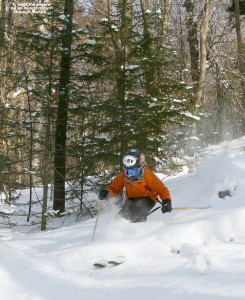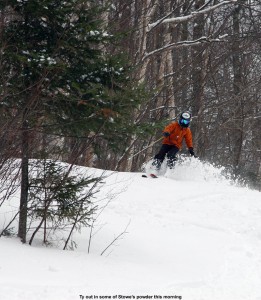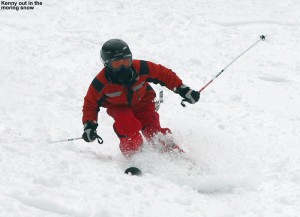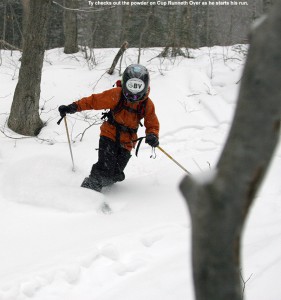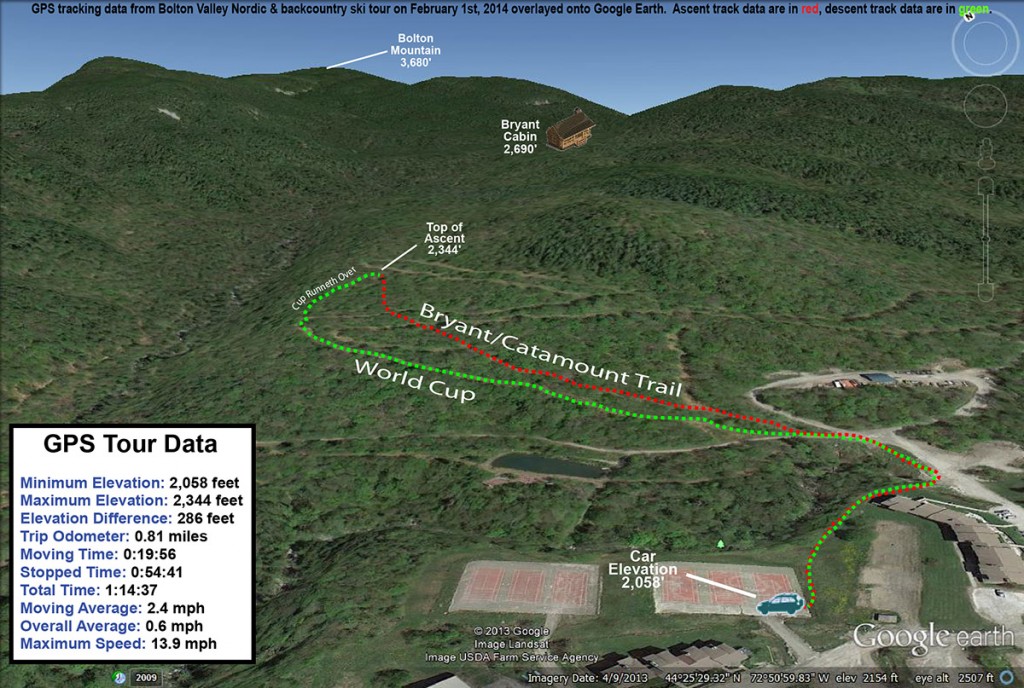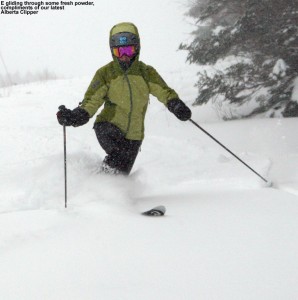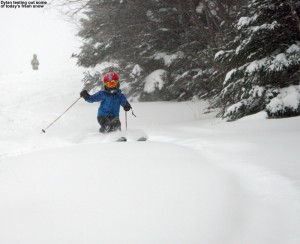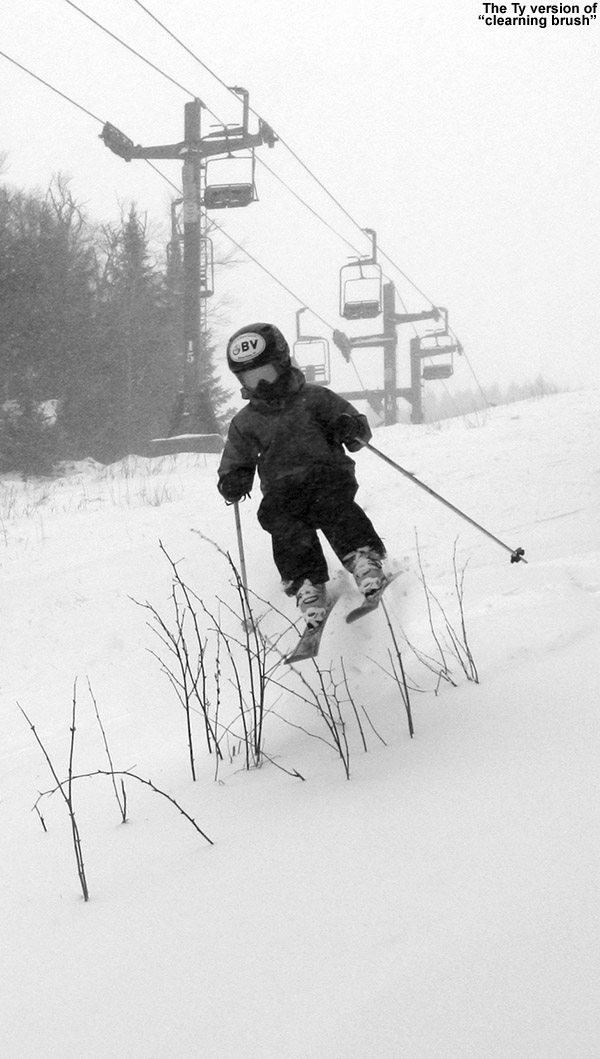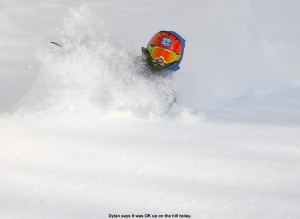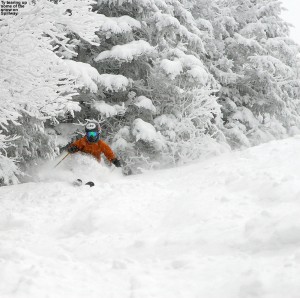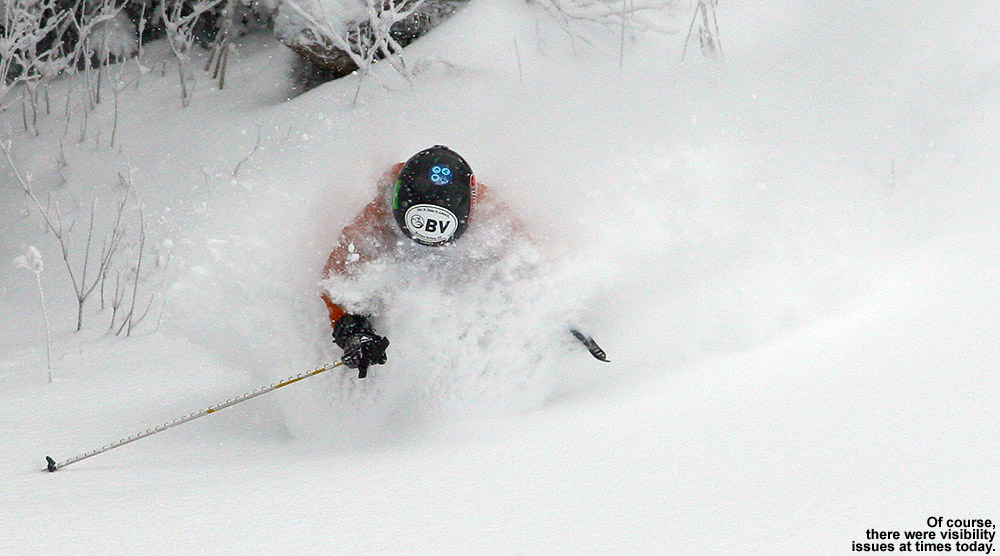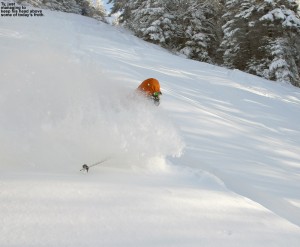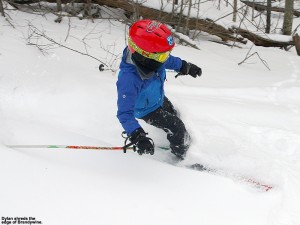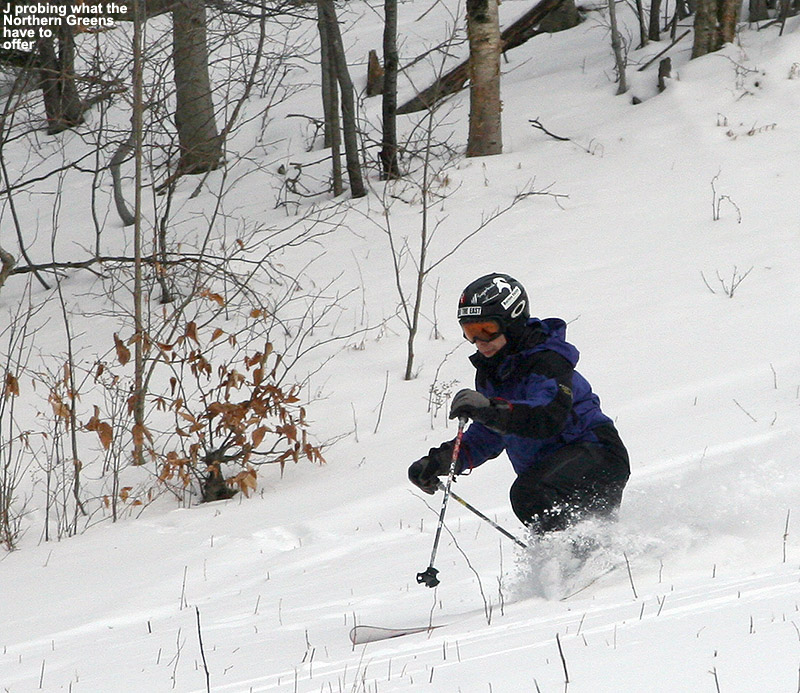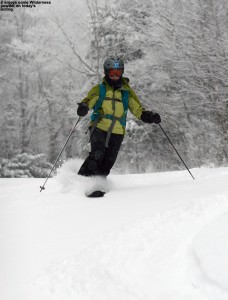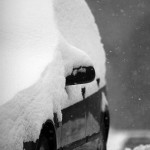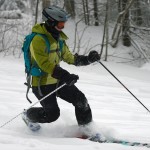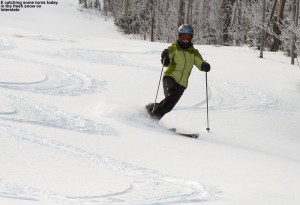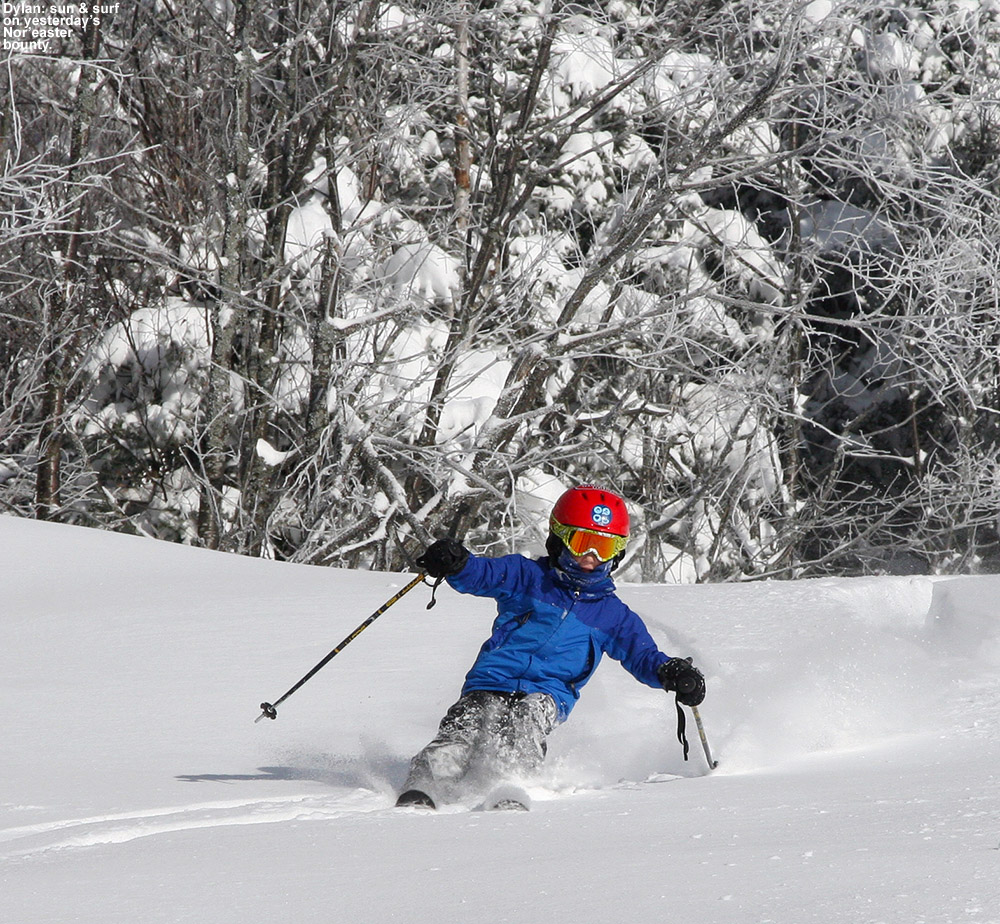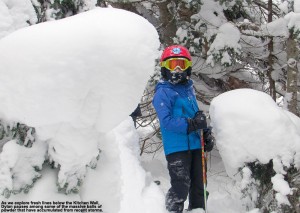
We had a storm last weekend that produced a powder day on Sunday, so we headed out early and spent the entire day at Stowe, but with no fresh snow today, it was back to our more typical afternoon session spent with the BJAMS ski program. We actually arrived a bit earlier than usual so that E could have a special ski instruction session with one of the students on the carpet surface lift, so parking at the base of Spruce Peak was somewhat less hectic than usual. Skies were gray with clouds ahead of a storm coming in tonight, and temperatures were reasonable at around 20 F.
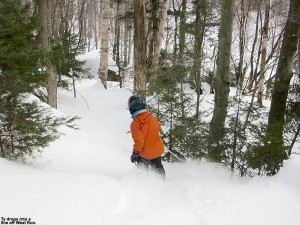
Luc and Jack were away at a martial arts event, so it looked like it would just be Ty, Dylan, and Kenny with me for our session. Kenny still had to eat lunch when we first arrived, so Ty, Dylan, and I headed up Sunny Spruce for an early run. We decided to do a bit of exploring in the trees off West Run, and found the powder there to be right around a foot, just like we’d encountered in many areas at Bolton Valley yesterday. Although the snowpack at the Mt. Mansfield Stake is still around the 40-inch mark, we didn’t find any serious issues with coverage in that area of mixed hardwoods and evergreens.
We hooked up with Kenny and stuck to Spruce Peak for our next run – E wanted us to check in with everyone gathering for the program at 1:00 P.M. to see if anyone else would be joining our group. Kenny was interested in West Smugglers because of the moguls, and he took them on with no problems. I was initially worried about the coverage on West Smugglers due to the fact that it’s all natural snow, somewhat south facing, and relatively low in elevation, but the coverage really was decent. If West Smugglers is doing OK, I had to think that Stowe was close to 100% open, and indeed I see that that’s the case when I check the snow report.
We found out that Ethan was going to join our group for the day, as I was told that he jumped at the chance when offered, so that brought us to four and we headed over to the Gondola for some runs. Dylan’s request was for some “Mac and Cheese” so we headed right there. I filled Ethan in on some of the usual off piste tips that I gave Kenny last week, stay together, get up and out of the way when you stop in choke points, etc. I also let him know how things would go with me as the only coach – we’d have Ty lead since he’s confident enough in his abilities and knowledge of the terrain to do so, and I’d take up the rear. The run was great, and Kenny exorcised some of the demons from last week by conquering some of those tricky spots in the main line we’d been working. Ethan had no problems, and I hadn’t suspected that he would based on his previous trips with our group. Once out onto Nosedive, I worked with the boys on short-radius turns and holding tight, controlled lines along the edge of the trail where there was some quality snow. For the most part, Nosedive was its usually icy self due to manmade snow and skier traffic, so there wasn’t anything different to note there.

Kenny’s request was also for Mac and Cheese, so we took it again, but this time with a variation. I’d seen lots of untracked powder above our usual main route, so I took the boys on an exploratory session with a higher traverse through the area. I set the track, which turned out to be through a lot of powder. Depth checks typically revealed 20+ inches around there, and if our feet hadn’t been able to inform us of the depth, our eyes could have. Massive balls of fluffy powder sat on all the evergreens, and it was really starting to look like Mt. Mansfield in winter. Even with me setting the traverse track through the forest and multiple people behind me packing it down, Kenny struggled at times getting through the powder. I can see that we’ll have to work with him on that – there are certainly things that you learn about traversing through deep powder in the forest, and ultimately it makes your travel so much more efficient. I can remember when Luc struggled with that at times as well, but after a couple of seasons of exposure, he’s really starting to get it down. We did manage to find some nice untracked and lightly tracked lines with our added traverse, but I could see that we’d be able to get much more if we went farther. We’d worked Kenny hard enough by the time of our descent though, so that was enough deep powder practice for the time being.
Kenny was getting hungry after that excursion, not that he needs any special reason to get hungry to begin with, but we stopped in for some waffles at the Cliff House to take the edge off. Ty’s trail selection was next, and in the same vein as what we’d been doing, he chose straight up Cliff Trail because he loves all the little chutes along the skier’s right. What we’d ended up doing to finish off our runs was to skip past Lower Nosedive and head over to Lower National to work on the bumps. The boys worked on slowing down and staying in control, and I showed them how to avoid any icy patches between the bumps by making tighter, earlier turns that let you stay on the back side of the bump in the good snow.
Ethan called for a run to the Spruce Village fire pit for s’mores and hot chocolate, so we ended our Mansfield day after that run. After some fire pit time and some good snacks, we got a couple more runs on Sunny Spruce, including last chair. Ty and Kenny raced to the bottom by different routes in an exciting finish to the day. Snowfall was actually just starting to appear as we were leaving the mountain, and we’ve had light snow here at the house this evening, so it looks like the mountains will have a light refresher for tomorrow.


